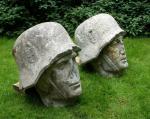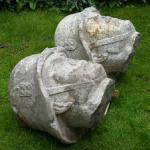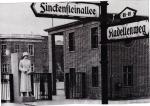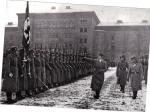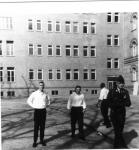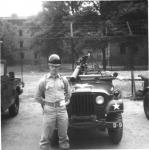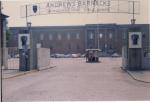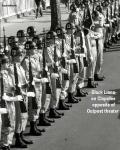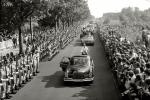-
Posts
58 -
Joined
-
Last visited
Content Type
Profiles
Forums
Blogs
Gallery
Events
Store
Everything posted by Long Thrust VI
-
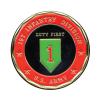
Bundesrepublik Bund/Danbat?
Long Thrust VI replied to Jock Auld's topic in Germany: Post 1945: Bundesrepublik & DDR
Thanks, guys! Collectively, Members of this site possess an amazing amount of knowledge. John -
Thank you, Ed! Anyone who served in Cold War Berlin is encouraged to join the Berlin U.S. Military Veterans Association (BUSMVA) checkout the website at www.berlinveterans.com -- quarterly newsletters, annual reunions -- every fourth year (including 2014), they reunite in BERLIN. BUSMVA is a good, solid Veterans organization! My regards! John
-
ADDENDUM: Looking at the above Andrews kaserne map, I'm told the courtyard area near Buildings 109 & 110 (upper left corner) is where the "Night of Long Knives" executions were conducted, 30 June 1934. One source suggests that the firing squad executions were conducted with full military formality & included a drummer. The Home Page of a Russian militaria website: http://sergeygavrilov.blogspot.com includes the two above statue heads photos, stating, "Granite Head Statues - entrance of the barracks of the SS Division 'Leibstandarte Adolf Hitler.' Sculptor Bernhard Bleeker - Photos from the Bundesarchiv - Offer price 50,000 euros." Regards, John
-
Gentlemen: Unfortunately, I was unable to find photos of Andrews Barracks "Yankee Stadium" as discussed above (but I'll continue looking). However, the following photographs were located from other Internet websites -- hopefully, it's not a breach of ethics to post them here. The first is a "map" of Andrews Barracks during the U.S. occupation of that kaserne & in which Yankee Stadium is clearly identified. The second is a more recent view of the two concrete pillars at the Finkensteinallee entrance -- that's the brick guard building in which Irish Gunner mentioned spending considerable time. Please notice the clear vertical seam or "cold joint" between two types of concrete in the pillars. The last two photos are particularly interesting & may be the removed heads of the concrete statues "Eternal Corporals (Rottenfurher)" which flanked the Finkensteinallee entrance during the Nazi era -- notice SS helmet insignia. Quite possibly, the heads were removed by Soviet or U.S. Soldiers prior to the statues being covered with cement; creating two concrete pillars or blocks which, to the best of my knowledge, exist to this day.
-

Bundesrepublik Bund/Danbat?
Long Thrust VI replied to Jock Auld's topic in Germany: Post 1945: Bundesrepublik & DDR
Good move, Jock -- no doubt John will enjoy owning/displaying them . Will someone please identify them for those of us with less knowledge? Thank you! (Another) John -
Gentlemen: Here are four Nazi-era photos of the kaserne we called Andrews Barracks. Irish Gunner will recognize the first three as being of the Finkensteinallee (main) entrance. Please notice the concrete "Eternal Corporals" statues & compare their identical location to that of the concrete blocks (on which are attached Berlin Special Troops distinctive unit insignia) in the previously posted 1963 photo. Another interesting location at Andrews Barracks was a small sports field we Amis called "Yankee Stadium." Located toward the kasern's back (from the main gate), Yankee Stadium was used primarily for physical training, etc. On 28 May 1963, 1st Battle Group, 28th Infantry held its annual Organization Day activities there. Yankee Stadium had a neat cut-stone reviewing stand with iron or steel railings, not dissimilar from that at Nuremberg, which overlooked the field. During the Third Berlin Crisis, 287th Military Police Company utilized Yankee Stadium as a helicopter landing pad for MP teams sent into Steinstuken, a small West Berlin enclave located within East Germany. I'm told Yankee Stadium has given way to modern condominiums. If possible, I'll locate & post photos of Yankee Stadium. Regards, John
-
Gentlemen: Unfortunately, I'm incapable of erasing the first of those duplicate posts & editing the second. Hopefully, someone else will do it for me. Thank you. Here's a diagram of the original Lichterfelde kaserne -- back when it was still a Prussian military academy. The 1930s Nazi-era renovations changed it significantly & WW II made further changes. Many of the buildings were damaged beyond repair. Notice the huge fenced-off building behind the Soldiers, in the above photos, posing with their anti-tank gun. That building sustained so much war damage that trees were growing from it. In 1963 (18 years following WW II), the U.S. Army utilized it for ammunition storage & I'm informed it was demolished about 1967. It was my good fortune to reside in a post-WW II rebuilt wing of a similar building (seen in a couple other above photographs) which still stands. The 1930s renovation moved the kaserne's main entrance to Finkensteinallee. Originally, standing on either side of that gate were large concrete statues of armed/helmeted sentries (referred to by locals as "The Eternal Corporals"). Apparently, shortly after the U.S. Army took possession, those statues were encased in concrete, turning them into rectangular blocks. Close inspection confirms those blocks are made of two types of concrete, causing speculation that if one were to chip away enough American concrete, he would reveal the original Nazi-era Eternal Corporals statues. It was my experience to stand formation on the cobblestone courtyard near the main entrance. Historic photos show Prussian Cadets, Leibstandarte members, Soviet Soldiers, & U.S. Army troops parading on that same courtyard. No wonder we all find history so fastinating. Hopefully, you've enjoyed this little lesson about Berlin's Andrews Barracks. My regards, John
-
During my unit's all to brief Berlin assignment I quartered at the U.S. Army's Andrews Barracks, a facility of significant history, surrounded by brick walls. On one of those walls is a plaque which reads: PREUSSISCHE HAUPTKADETTENANSTALT 1878 - 1920 Erbaut von 1872 bis 1878, Realgymnasium for jungen in der Weimarer Republik von 1920 bis 1933. Wahrend des Dritten Reiches Kaserne der Leibstandarte SS Adolf Hitler Im Juni 1934 zahlreiche Erschiesungen im Zusammenhang mit der Ermordung Rohms und der Entmachtung der SA. Seit 1945 Andrews-Barracks der amerikanischeri Schutzmacht It's been said that every German Kaiser attended military academy at this facility. Many famous & infamous persons went to military school there including, among others, Hermann Goering & Franz von Papen. During the June 1934 "Night of Long Knives," Berlin's Strumabteilung (storm troopers or SA) leadership was executed, by SS firing squad, on this kaserne. During the period of Hitler's SS body guard, the facility underwent extensive renovation (including the addition of an indoor Olympic-size swimming pool) & was considered, internationally, as a state-of-the-art military barracks. Following the Battle of Berlin, Soviet troops briefly occupied the facility & formally turned it over to the U.S. Army in July 1945 -- among those present at the ceremonies was General Omar Bradley. Here are some of my personal photos taken at Andrews Barracks in 1963. It's my understanding that since German reunification, this old facility is now used by the German Federal Government to house archives, including STASSI surveillance documents from Cold War East Germany. Regards, John
-
During my unit's all to brief Berlin assignment I quartered at the U.S. Army's Andrews Barracks, a facility of significant history, surrounded by brick walls. On one of those walls is a plaque which reads: PREUSSISCHE HAUPTKADETTENANSTALT 1878 - 1920 Erbaut von 1872 bis 1878, Realgymnasium for jungen in der Weimarer Republik von 1920 bis 1933. Wahrend des Dritten Reiches Kaserne der Leibstandarte SS Adolf Hitler Im Juni 1934 zahlreiche Erschiesungen im Zusammenhang mit der Ermordung Rohms und der Entmachtung der SA. Seit 1945 Andrews-Barracks der amerikanischeri Schutzmacht It's been said that every German Kaiser attended military academy at this facility. Many famous & infamous persons went to military school there including, among others, Hermann Goering & Franz von Papen. During the June 1934 "Night of Long Knives," Berlin's Strumabteilung (storm troopers or SA) leadership was executed, by SS firing squad, on this kaserne. During the period of Hitler's SS body guard, the facility underwent extensive renovation (including the addition of an indoor Olympic-size swimming pool) & was considered, internationally, as a state-of-the-art military barracks. Following the Battle of Berlin, Soviet troops briefly occupied the facility & formally turned it over to the U.S. Army in July 1945 -- among those present at the ceremonies was General Omar Bradley. Here are some of my personal photos taken at Andrews Barracks in 1963.
-
Gentlemen: For those interested in the U.S. military occupation of West Berlin, this website is recommended: www.berlin-brigade.de -- Webmaster Reinhard von Bronewski has posted, to the best of my knowledge, the world's finest collection of information regarding America's Berlin experience. In addition, he's added Berlin memories of numerous U.S. Soldiers (including my two articles mentioned above). ENJOY! My regards, John
-
Gunner, my attempts to upload those articles were unsuccessful -- likely the result of my lack of computer skills. I'll keep trying until I get this thing figured out. I'm beginning to think my articles must be too long to post on this site. In any case, I've attempted to post some press photos taken the day JFK came to Berlin. These photos were taken on Clayallee as the President was enroute to the U.S. Clay HQ to address Berlin's American community. Regards, John
-
IrishGunner, thank you for your interest. I have authored two published articles regarding that period: "FREEDOM AFFIRMED - A Berlin Veteran Remembers 26 June 1963" (about President Kennedy's Berlin visit) & "OPERATION LONG THRUST - Cold War Troop Surge Behind the Iron Curtain" (a history of the augmentation of U.S. Berlin Brigade from CONUS, units involved, etc.). If I can figure out how it's done, I'll post them both on this site. Or, it would be much easier to just email them to anyone who's interested. Regards, John
-
Yes, Sir, I served in Berlin, spring - summer 1963 as an Enlisted Soldier in an augmenting unit (1st Battle Group, 28th Infantry, 1st Infantry Division). Beginning August 1961, in response to the Third Berlin Crisis, President Kennedy ordered the reinforcement of the U.S. Berlin garrison. Augmenting Task Forces were comprised of one Infantry Battle Group reinforced by a Light (105 mm) Artillery Battery, a Light (2.5 T) Truck Company, & lesser support elements. 7th Army, in West Germany provided the first two Task Forces (1st Battle Group, 18th Infantry, 8th Infantry Division & 1st Battle Group, 19th Infantry, 24th Infantry Division). In 1962 & 1963, augmentation was provided by 4th Infantry Division (Ft. Lewis, WA) & 1st Infantry Division (Ft. Riley, KS) which rotated reinforced Battle Groups, quarterly, under "Operation Long Thrust." From late 1963 - 1966 (following the ROAD reorganization), 24th Infantry Division in West Germany augmented Berlin Brigade by rotating Infantry Battalions into the City. It was my privilege to be in Berlin on 26 June 1963, during President Kennedy's memorable "Ich bin ein Berliner" visit.
-
MTW, There is a Veterans' association for former members of the U.S. Constabulary with an excellent website full of the kinds of information you're seeking: www.usconstabulary.com -- also take a look at: www.usconstabulary.org -- Good luck! Regards, John
-
Gentlemen: Here are a couple more "books for beginners" dealing almost exclusively with steel helmets. They are both fairly early (1970s) & may be considered crude & lacking in content -- but they are a start: STAHLHELM - EVOLUTION OF THE GERMAN STEEL HELMET (1971) by Floyd R. Tubbs. A 104 page soft-back filled with illustrations, black & white photographs, & some text. Several pages are dedicated to post-WW II developments, both Western & Eastern. Katalog Deutschland-Europe-Ubersee Stahlhelme Von 1915 bis zur Gegenwart (1978) by Franz Thaler. A small 4"x6" 242 page soft-back filled with a large selection of black & white photographs of steel helmets employed world-wide from 1915 to time of publication -- a handy reference guide for collectors. Each photo has a short caption in both German & English languages. Hoping you'll find these a good addition to this subject. My regards, John
-
Thank you, Gordon! This sort of feedback is helpful. When you have a moment, please look at the upper photo on page 155 of De Quesada's book; captioned. "Assault troops boarding a rubber raft. Of interest is the steerman wearing a Second World War-vintage German steel helmet, while the others are wearing American-style helmets." Upon close inspection, I see four helmeted-Soldiers, all wearing what appear to be German M-35s & no "American-style helmets" (all others are bare-headed or wearing caps). My thought is that this photo is of an early 1950s Bundesgrenzschutz (BGS) river-assault & not a later Bundesheer exercise, as the author suggests. What do you think? Two more excellent books have been "unearthed" while moving: WEHRMACHT CAMOUFLAGE UNIFORMS & Post-War Derivatives (1995) by Daniel Peterson. WAFFEN SS CAMOUFLAGE UNIFORMS & Post-War Derivatives (1995) by Daniel Peterson. The author, Peterson, has performed extensive research while writing these two paper-bound books. He reveals the significant impact WW II German camouflage patterns had on both sides of the Iron Curtain. His books are filled with high quality, color photographs of substantive detail. Before reading Peterson, I was totally unaware that BGS's first camouflage uniforms were reversible white to an unusual splittermuster of very pale gray coloration. Is anyone here familiar with Daniel Peterson's books? My regards, John
-
Gentlemen, Here are a couple books from my collection (after a recent move, I'm in the process of unpacking/organizing ). It would be good to learn what others may think of them: The History of the German Steel Helmet 1916-1945 (1985) by Ludwig Baer. Despite it's title, this 448 page book includes substantial information about post WW II German steel helmets in police use. UNIFORMS OF THE GERMAN SOLDIER - An Illustrated History from World War II to the Present Day (2006) by Alejandro M. de Quesada. 223 pages including numerous color & black & white photographs & illustrations of both BW & DDR Soldiers. After getting organized, I'll identify other books for comment. Thank you. Regards, John
-
Gentlemen, Thank you for your replies. My only experience interacting with BW Soldiers was at Wildflecken, FRG, the winter of 1963. Usually, they wore high, pull-on, "dice box" boots with adjustment strap/buckle near the top of the boot shaft. Trouser legs were bloused over boot tops. Some formations (mountain troops?) wore lace-up, high-top shoes with British-style gators. BW Soldiers wore several uniforms, including the infamous "velvet louse" heavy wool, in olive color while on duty. Most off-duty Soldiers, wore "class A" uniform: a light gray jacket over darker gray trousers, a "peaked" cap, & low quarter shoes. Another off-duty uniform, which was particularly sharp, was a modified "class A" uniform worn with an M-43 cap, belt, & boots. Mountain troops wore short gray "Ike"-style jackets with adjustment laces near the waste. In my experience, off-duty officers were always seen wearing garrison "envelope" caps. Regards, John
-
Please know the background color of the SHAEF patch was black. Background color of the USAEUR patch is blue.
-
Specific correct answers to the questions posed are available in a book entitled U.S. ARMY UNIFORMS OF THE COLD WAR by Shelby Stanton. Unfortunately, my books are packed away pending my move to new quarters. The shirt worn with original Army Green shade 44 (AG-44) uniforms was tan poplin without military distinctions.
-
In the 1960s & 1970s, some U.S. Army units wore full-color Distinctive Unit Insignia (DUI) patches on the left pocket of "fatigue" shirts & field jackets. All, or nearly all, 1st Infantry Division units did so. After deployment to Republic of Vietnam, subdued versions of DUI patches were substituted for full-color versions.
-
A nice & rare certificate. Military service in Cold War Berlin was a unique experience for American Soldiers. Military personnel serving in Berlin from 1945 - 1990 were awarded the Army of Occupation Medal. Those serving from 14 August 1961 - 01 June 1963 were awarded the U.S. Armed Forces Expeditionary Medal for serving in a "Cold War hot spot" during a period of International Crisis.




